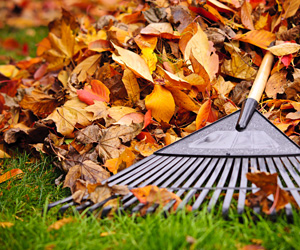Although energy efficiency is important all year, the realization of the upcoming colder temps of fall and winter and the prospect of having an uncomfortable home, suddenly make it a priority for many Maryland homeowners. When fall temps move in and you’re thinking about the energy efficiency of your home, check out these five areas for smart upgrades. From insulation to smart thermostats, these fall and winter energy saving tips can help keep your house cozy and help you save money.
Tip 1. Add Insulation

Having proper insulation in your home keeps warm air inside and helps your furnace work less during cold months, which lowers your heating costs. In fact, the Environmental Protection Agency (EPA) says sealing leaks and adding insulation can cut your heating and cooling costs by an average of 15%.
One of the biggest problem spots for heat loss is the attic, because warm air rises, leaving your home uncomfortable. Most Maryland homes fall in climate zone 4, which has a recommended attic insulation level of R-49 to R-60. Plus, air sealing with caulk or spray foam around your pipes, chimney, and recessed lights can block cool air from sneaking in.
Take advantage of local programs like the ones from EmPOWER Maryland to help cover these energy upgrades. For example, BGE’s Home Performance with ENERGY STAR offers up to 75% off project costs (up to $10,000). You may also qualify for a federal insulation tax credit of 30% (up to $1,200) through 2032.
Tip 2. Fix Drafty Windows and Doors
Sealing around doors and windows is one of the easiest ways to save energy. Tiny gaps around these areas let cool air in and warm air out making for an uncomfortable living space. The Department of Energy reports that reducing drafts can lower your energy usage by 5–30% each year.
Check for worn weatherstripping and apply fresh caulk where needed. If you see daylight under exterior doors, replace or adjust the door sweep. For older, single-pane windows, try heavy duty plastic film in winter, thick curtains at night, and make sure storm windows are shut tight and in good condition.
For homes that qualify, the Maryland LIEEP program offers free weatherization, including sealing and insulation help.
Tip 3. Get Your HVAC System Ready
Your heating system works hard in winter. A tune-up now will help it run better and last longer. Go ahead and take the time to schedule a professional heating check-up to ensure the safety and efficiency of your system before the cold heads our way. Plus, with help from EmPOWER Maryland, you can even get free or discounted HVAC check-ups.
Change your HVAC filters regularly, preferably quarterly, to keep air flowing and reduce wasted energy. Dirty filters make your unit work harder and can increase your energy costs.
Consider upgrading to a programmable thermostat or smart thermostat to give you better control of your home’s indoor temperatures. (Remember to keep your thermostat between 68-70°F in the winter.) Local utility companies even offer rebates for switching to smart thermostats, usually around $100 for ENERGY STAR certified models.
And if your system is outdated and barely hanging on, consider upgrading to a heat pump. These are efficient for both heating and cooling and also qualify for local rebates and federal tax credits (up to $2,000).
Tip 4. Check Your Roof
Because your roof is a major defense against nasty winter weather, it’s important that you inspect it for damage and repair any issues before winter gets here. It’s especially important to fix any missing or loose shingles before the snow hits to prevent moisture infiltration. Sadly, if water gets in, it can ruin your insulation (wet insulation can lose up to 40% of its insulating R-value).
Also, double check that your attic vents and soffits are clear so air can move properly. And clean gutters and downspouts to prevent ice formation, ice dams, and water backups.
Remember, a good roof, paired with strong attic insulation, keeps warm air in and energy bills down.
Tip 5. Use Your Ceiling Fans to Your Advantage
Here’s a handy tip that only takes seconds, yet many homeowners often forget about. Flip the switch on your ceiling fans so the blades spin clockwise. This creates a gentle updraft that pushes warm air down from the ceiling, where it naturally gathers.
This small change will make your rooms feel warmer and lets you lower your thermostat by 3–5°F without losing comfort. Just remember to turn your fan off when leaving the room since they warm people, not spaces.
Your Local Partner in Energy Savings
These five tips can make your Maryland home more comfortable and energy efficient before winter arrives. Many of these fixes are low- or no-cost, such as adjusting your fans’ direction. For bigger projects, EmPOWER Maryland, utility rebates, and federal tax credits are here to help you save money and reduce your home’s energy usage.
For expert help with updating your insulation or air sealing for a more energy-efficient home, count on DeVere Insulation Home Performance. We provide our Baltimore community and beyond with tailored insulation and air sealing solutions guaranteed to keep the entire family cozy throughout every winter season. Contact us today to learn more.
Works Cited
U.S. Department of Energy. (n.d.). Fall and Winter Energy-Saving Tips. Retrieved from https://www.energy.gov/energysaver/fall-and-winter-energy-saving-tips
U.S. Department of Energy. (n.d.). Why Energy Efficiency Matters. Retrieved from https://www.energy.gov/energysaver/why-energy-efficiency-matters
ENERGY STAR / EPA. (n.d.). Seal and Insulate with ENERGY STAR®. Retrieved from https://www.energystar.gov/saveathome/seal_insulate/methodology
Maryland Energy Administration. (n.d.). EmPOWER Maryland. Retrieved from https://energy.maryland.gov/pages/facts/empower.aspx
Maryland Energy Administration. (n.d.). Fall Into Energy Savings. Retrieved from https://news.maryland.gov/mea/2018/10/02/fall-into-energy-savings-during-energy-action-month/
Baltimore Gas & Electric. (n.d.). Home Performance rebate program. Retrieved from https://bgesmartenergy.com/residential/help-me-save/home-performance/rebates
FacilitiesNet. (n.d.). Insulation Issues: The Search for Savings. Retrieved from https://www.facilitiesnet.com/energyefficiency/article/Insulation-Issues-The-Search-for-Savings–19862
ENERGY STAR. (n.d.). Ceiling Fan Usage Tips. Retrieved from https://www.energystar.gov/products/ceiling_fans/installation-and-usage-tips
Constellation Energy. (n.d.). Ceiling Fan Direction for Winter. Retrieved from https://www.constellation.com/energy-101/energy-efficiency-tips/ceiling-fan-direction-for-winter-and-summer.html
Jerry Kelly Heating & Air. (n.d.). Ceiling Fan Winter Benefits. Retrieved from https://jerrykelly.com/energy-saving-tip-change-the-direction-of-your-ceiling-fans-this-winter/



